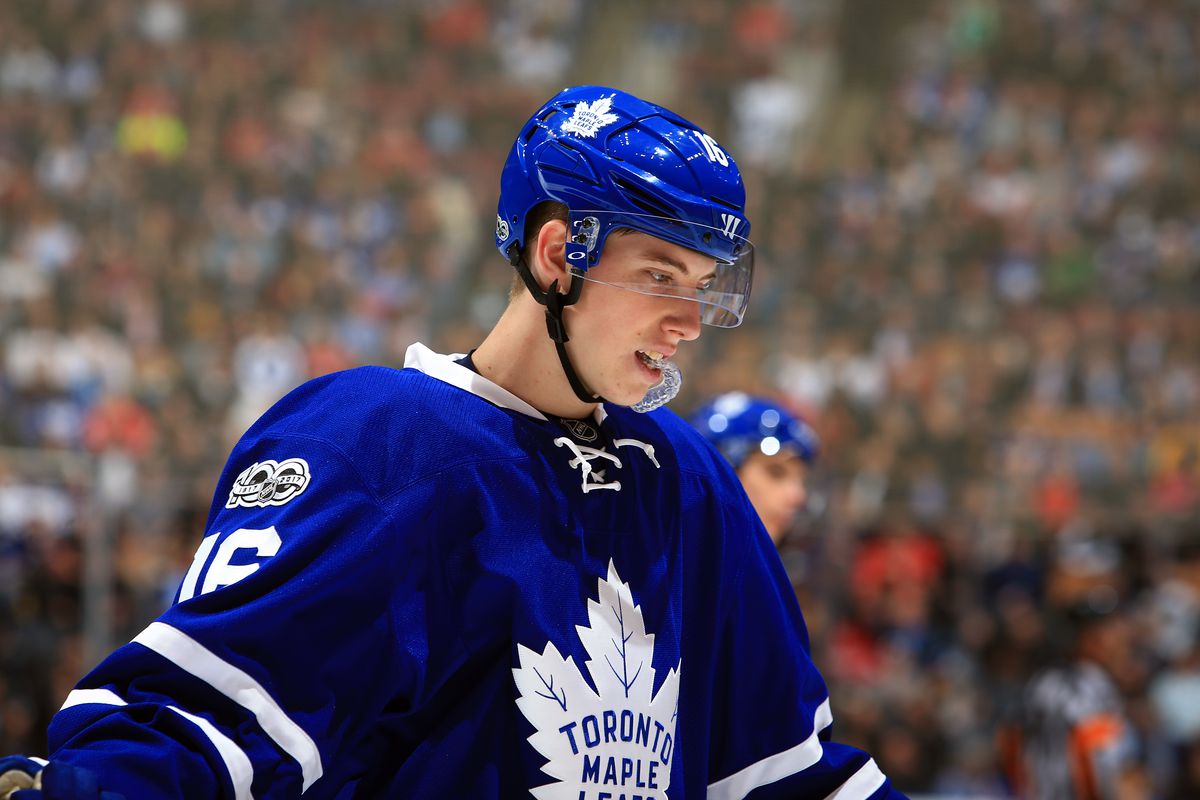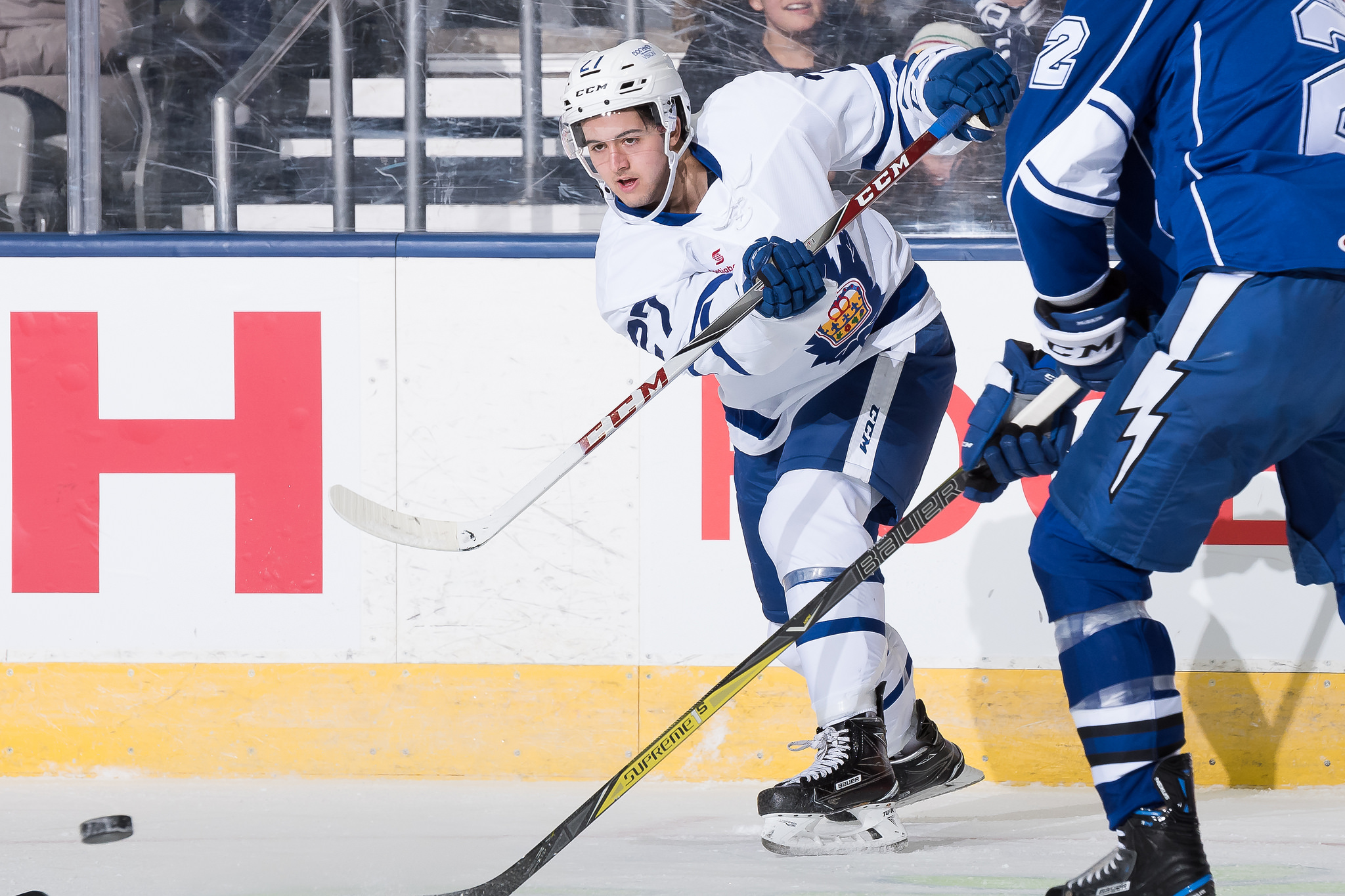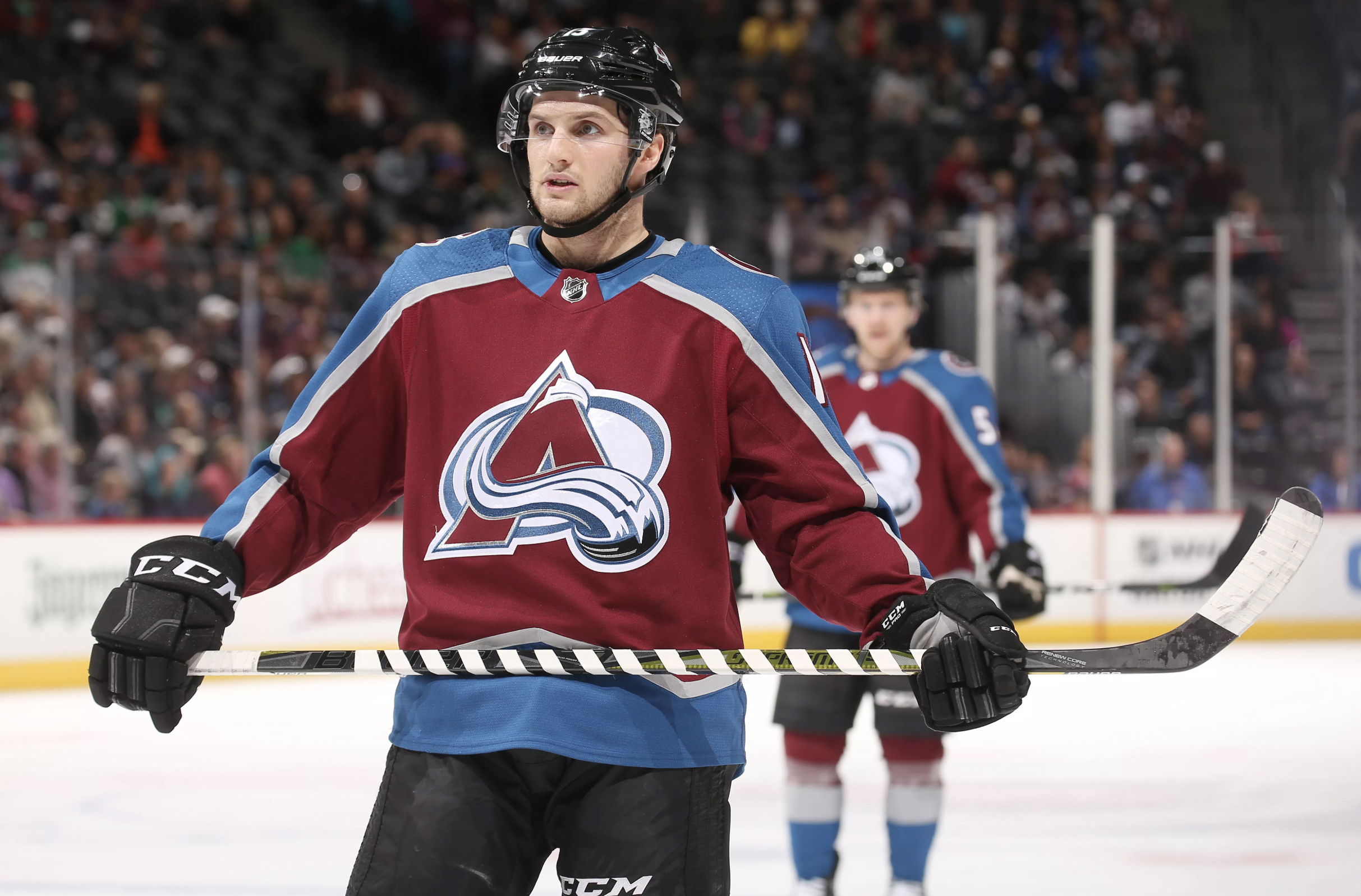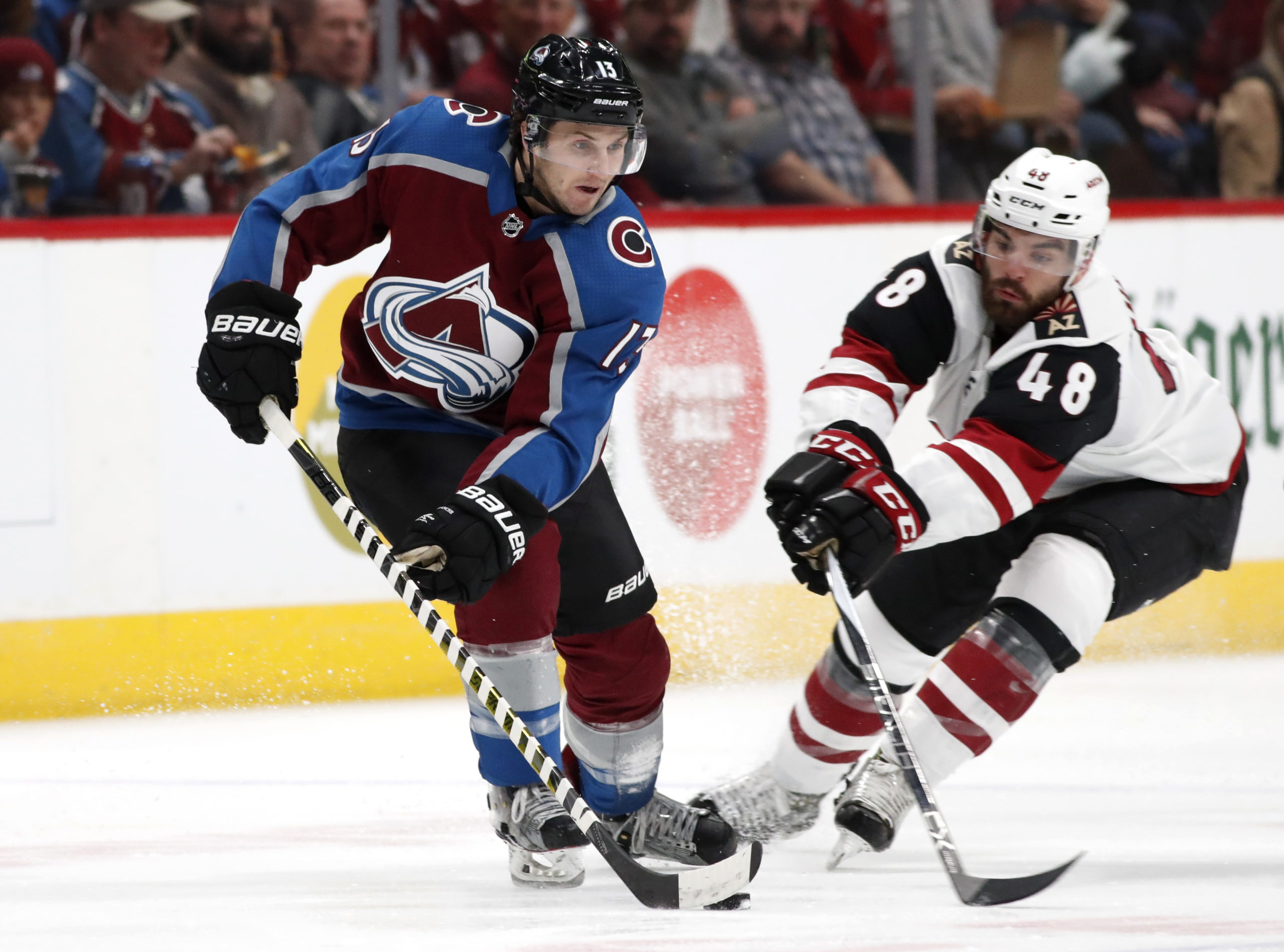With just over a week remaining until 2019 training camp gets underway, it’s time for a new chapter of Leafs Musings.
This week, we’ll cover my best guess on where Mitch Marner’s contract lands in term and AAV, a scouting report on Jeremy Bracco and thoughts on his NHL future, and a few early thoughts on where Alexander Kerfoot will slot into the Toronto Maple Leafs‘ lineup.
The Latest on the Mitch Marner Negotiation

I was told on Monday that the Leafs had made a three-year offer for around $9.5 million. This was not from a first-hand source, and while I have no reason to doubt them, there was too much of an opportunity for a game of “broken telephone” to report this. I was not sure what to make of this, but I certainly took notice when Darren Dreger mentioned the exact same term and dollar amount less than 24 hours later:
There’s been some speculation that there’s a three-year deal, that’s essentially remained on the table, with an AAV somewhere around $9.5.
To be clear: I have no idea if this is true. I was in a similar situation last offseason when I was told that Josh Jooris was signing in Toronto, and I made a joke about it approximately 20 minutes before it was reported anywhere. Once again, I wasn’t confident enough in the information to report it, but it was credible enough for me to take it seriously. The way it was phrased to me was similar to how Dreger reported it: The Leafs had made an offer in that range and that the Marner camp had not yet accepted it.
The remainder of this conversation is mostly speculation on my part.
The Matthews contract sure seems to be an anchor here. Marner is coming off of a 94-point season and he may end up as the best playmaker in the history of the franchise. He led the NHL in 5v5 points per minute last year, matched up against top competition, and is a major contributor on both special teams units. Frankly, he’s not worth Matthews money and his camp probably knows that he’s not going to get a $11.634M AAV. That doesn’t mean that it shouldn’t be somewhat close.
Matthews has not regularly matched up against opposing top lines. He has not played as many games as Marner, does not kill penalties, and does not have Marner’s defensive 5v5 impact. Sure, Marner may not be worth quite as much as Matthews, but his agent is arguing that it’s at least close. There is no doubt that Marner would take the same 5 x $11.634M contract that Matthews received, and I expect that he would even take a 5 x $11M deal rather quickly.
Kyle Dubas does not have many options here in terms of the number of years that he can offer. He’s not going to give him a four-year contract that walks him to free agency. He surely does not want to give him a five-year contract that only buys one UFA year while making him a free agent at the same time as Matthews and William Nylander. A one- or two-year deal does not offer Marner much in terms of financial security. A six- or seven-year deal could make sense, but if Marner is going to give up more UFA years than Matthews did, he’s going to want a high AAV to compensate for that.
A three-year deal appears to be the most likely outcome. There’s little precedent for this type of move, but I don’t think the Leafs are ready to give him a long-term contract with a sky-high AAV. I expect this group of RFAs to get a little bit more than we’re used to; while I don’t think player empowerment will get to the same level as the NBA, it sure seems like we could see a bit of a shift here.
A number of major TV personalities have overrated Marner in recent months. I’ve seen significant pushback to this to the point where many Leafs fans on my timeline are now underrating Marner. There are some who believe that the player has no leverage and that you can just strong-arm him into taking any deal that you’d like. These types of arguments are always fun to see during the CBA negotiations, when the same person says, “They have to cave! It makes far more sense for them to cave than to lose out on all this profit!”. A few weeks later, we have a lockout.
We just saw Le’Veon Bell sit out for an entire NFL season. While I don’t see Marner sitting out an entire year, it’s worth pointing out that the Leafs need Marner just as much as he needs a NHL paycheque. They can’t waste a year of this core in its prime and they can’t afford to lose a trade of this magnitude.
Both sides need some sort of resolution. I expect that the contract will end up being rather player-friendly. Many people that you see on TV will not acknowledge this while many people that you follow on Twitter will over-exaggerate this. If players like Mikko Rantanen and Brayden Point sign first — and for less than expected — we may see the AAV pushed down slightly. My final guess is a three-year contract at $9.393M, which gives him the Doug Gilmour number that he wore in junior and lets him put a bit of a PR spin on this. I hope it is less than this, though.
An Updated Scouting Report on Jeremy Bracco

Jeremy Bracco is an undersized forward who plays for an organization that is stacked at his position. Mitch Marner, William Nylander, and Kasperi Kapanen are all far too good to play on a fourth line. Bracco’s heel-to-heel skating technique also does not make him a candidate to shift over to left-wing. Normally, a 22-year old forward who just scored at over a point-per-game pace in the AHL tends to get tons of hype, but things appears to be going in the opposite direction for Bracco with the Leafs’ fanbase.
Let’s make one thing clear: If Bracco’s offensive game translates well to the NHL level, he will have a long career. He’s the second-best pure passer in the organization (yes, I’m serious). While passing does not equal playmaking, and a player with a Nylander-like transition game will rack up more assists, his ability to thread the needle seems bound to translate seamlessly to the NHL.
If you get Bracco the puck in the offensive zone, good things are going to happen. Everyone he plays with suddenly becomes a far more dangerous scoring threat and you can expect to see plenty of tap-in goals. Bracco will take the puck, pivot as if he’s about to shoot, draw everyone towards him, then send off a tape-to-tape pass that results in a wide-open net for a teammate. There’s no doubt that there’s value in that.
The main question with Bracco is going to be: Can he get the puck into the offensive zone enough to fully capitalize on his skillset? He’s pretty weak, so he’s not going to be a Hyman-type who generates extra offensive zone time by winning 50-50 puck battles. He’s going to need to be decent at entries as a result, and since he’s not overly powerful or fast, it all comes down to how well his heel-to-heel technique works against NHL defenders. If he’s below average in transition, he’s going to have a hard time showing off his skillset.
There’s a few common criticisms around his game that are probably worth expanding on:
- That he’s not a dangerous 5v5 scorer: Bracco may have been the AHL’s most dominant player on the power play last season, which is a selling point of his game and not a drawback. As far as I know, they still count power play goals on the scoreboard. Yes, he was not as dominant at 5-on-5 as he was on the power play, but achieving that would be close to impossible. Bracco was one of his team’s best scoring threats at 5-on-5 and that was always clear. The team lost Sam Gagner to the Edmonton Oilers, Trevor Moore to the Leafs, and Chris Mueller for about a month due to injury. When Bracco wasn’t on the ice, the team never looked all that dangerous.
- That Sheldon Keefe gave him sheltered minutes: This is partly true, as Bracco did receive plenty of offensive-zone starts, but that’s what happens when you’re a talented scorer on a team that is seriously lacking in that area. If Par Lindholm had to replace an injured Nazem Kadri last year, and you had Lindholm and Gauthier as your bottom-six centers, Auston Matthews may have broken the record for offensive zone starts. If your opponent ices the puck after a long shift, you don’t want to throw Colin Greening and Josh Jooris out there. Bracco was not in some sort of face-off-get-off (FOGO) role with offensive-zone face-offs, and like every player, the majority of his shifts started on the fly. It looks like the Marlies will have far more scoring depth this year, so Keefe should have more options available to him for offensive-zone situations.
- That Chris Mueller carried him offensively: This is similar to the Tavares-Marner situation, where two good scorers benefited from playing with one another. The same can be said for the majority of first-line duos, and this wasn’t some sort of Crosby-Dupuis or McDavid-Chiasson situation. Mueller had not scored more than 20 goals in any of the previous four seasons before netting 33 this year despite playing in fewer games. While Mueller did have a high shooting percentage, and part of that is likely to due luck, it’s not a coincidence that his happened while playing with such a high-end passer. When Mueller was hurt in late February and early March, Bracco played in 13 games and recorded 13 points.
- That he’s horrendous defensively: I don’t think he’s going to be above average defensively as a NHL player, but I’ll take my chances that he’s not horrendous, either. He’s weak and not all that fast, and that’s not a great combination, but he is quite smart. I’ve seen him used on a checking line in the past, both in the OHL and on the USA rosters, but that just wasn’t going to happen on a team with below average scoring talent.
- That he can’t play on a NHL fourth line: To be clear, I don’t think a fourth line role is the best spot for him. However, Tyler Ennis just had a great season as a 5’9″ fourth-line winger with defensive question marks, and I’m not sure what the big difference is. I like having a talented scorer on the fourth line who can take advantage of playing against easier competition. Just like almost every other young player, I think he will eventually need to start on the fourth line, try to prove himself, then work his way up.
In terms of development, I’d like to see Bracco become just a little bit faster this year and a little bit stronger. This would help to ensure that he’s an effective transition player at the NHL level and allow him to spend more time in the offensive zone. His passing often allows his teammates to generate clean entries and his heel-to-heel move will work on a fair amount of defenders, but adding just a little bit more speed and power is only going to benefit his game.
Bracco is a talented forward in a prospect pool that is lacking in the scoring department. If his offensive game translates well to the NHL level, he will have a long career. If he has a hard time gaining the zone against NHL defenders, he will have a tough time becoming an impact player. I would have been open to calling him up at the end of last season, limiting his minutes at 5-on-5, and handing him the keys to the second power play unit, as he could have been a legitimate difference maker on a struggling unit that often played significant minutes.
He’s probably not going to start the season in the NHL, but he’s two-and-a-half years younger than Andreas Johnsson and two years younger than Trevor Moore. There’s always more risk involved when projecting an undersized winger, but he’s a damn good passer and he has a real chance at a NHL career. If he continues to develop and looks like he can be an effective middle-six scorer, the Leafs will certainly find a spot for him down the road. While he’s far from a safe bet, there’s also no reason to write him off as a prospect at this point in time.
Alexander Kerfoot’s Fit in the Lineup

Kerfoot seems like a clear favourite to be the third-line center on opening night. From what I’ve seen, he looks perfectly capable of playing that role.
I went back and watched plenty of Avalanche games and I saw a smart player who wins a fair number of battles. He’s a pretty good passer, generates plenty of deflections, and plays a fairly hard-nosed style for a smaller forward.
I don’t see him as some sort of game-changing offensive force on the wing, so I don’t mind having him in a more defensive role up the middle. While William Nylander is certainly capable of playing this role as well, he’s always been lethal when playing with Matthews and I want them playing together as much as possible. Despite the fact that Kerfoot spent most of his time on the wing last year, he looked perfectly fine at centre in my handful of viewings and should pair nicely with a high-volume shooter or two.
Having said that, it’s worth pointing out that the Leafs have been spoiled by their third line in recent years and it’s going to be tough to match their recent production. Kadri was obviously far better than an average third line centre. Previous to this, Mitch Marner and James van Riemsdyk consistently beat up on easier competition. It will be up to players like Kasperi Kapanen, Trevor Moore, and Ilya Mikheyev to outperform forwards like Patrick Marleau and Connor Brown. They shouldn’t have a problem doing that, but it’s tough to tell just how good their third line will become. If the third line is strong, this Leafs team is going to be a nightmare to match up against again this season.

































